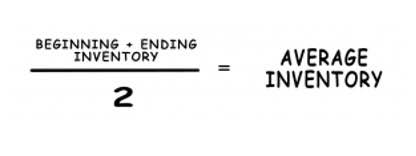Church Accounting: Ultimate Guide + Best Practices to Know

Continuously assess and improve financial practices, adapting to changing circumstances and best practices in nonprofit financial management. Remember, every church’s COA will look a little different, depending on its size, structure, and specific activities. It’s important to design a COA that fits the church’s needs and to review and update it regularly to ensure it continues to serve its purpose effectively. By understanding and effectively utilizing a Chart of Accounts, churches can ensure they are managing their finances in a way that best supports their mission and serves their community. A church’s Chart of Accounts is simply a list of accounts and categories that help to organize its financial transactions. “List” doesn’t sound nearly as spiffy as “Chart of Accounts” so I can understand why they named it that.
Nonprofit Accounting Terms

While cash and check contributions are still important for many churches, they’re less significant than they used to be. Although you’ll create an operating budget from scratch once a year, budgeting shouldn’t be a one-and-done event for your church. Check in with your budget on a monthly basis to help keep your church on track with its spending and revenue generation throughout the year. Let’s get started with an overview of what church accounting is and what makes it unique. Download our free sample church chart of accounts and compare it to yours. For organizations tracking budgets and financials for grants, programs, departments, or multiple locations.

Church Financial Transparency and Accountability

Dedicated accounting software for your church will streamline your processes, reduce accounting errors, and save time on administrative tasks. Let’s explore the essential guidelines and best practices every church should follow to maintain financial integrity. Learn how Jitasa’s team of experts can help you Partnership Accounting make the most of your church’s accounting practices.
- The second one is the one that came across my desk which we aptly helped reorganize.
- By following these steps, you can create a solid operating budget that supports your church’s mission and ensures financial health.
- We need to take a look at the net assets because this is typically called owner’s equity in most accounting software.
- The percentage of your church members who tithe or give can feel confident their tithes are being used effectively and responsibly to support the church’s mission and vision.
- Lean into the fourth basic principle, and ask how can you meet their need some other way.
Church Chart Of Accounts Made Simple (A Pastor’s Ultimate Guide)
- Let’s explore the essential guidelines and best practices every church should follow to maintain financial integrity.
- The primary difference between accrual and cash-based accounting is the timing of when revenues and expenses are recognized.
- The same principles can be applied to ministry supplies and travel.
- Before finalizing the chart of accounts, review it to ensure it aligns with your church-specific needs.
- There are a ton of Church Accounting software on the market, but be sure to choose the one that fits the needs of your church.
- These should not include bank interest like dividends, or CD and saving account interest.
Streamlining your financial management systems and processes will save time and reduce your administrative workload. The overall administrative burden on their staff was drastically reduced. This allowed their leaders to focus on church chart of accounts their core mission, knowing their finances were efficiently managed and compliant with IRS requirements. Ensure all your funds are allocated to proper budgets and purposes (e.g., Children’s Ministry, Missions, Building funds).
It shows how the debits and credits move the account depending on which account you use. In other words, if your entry is a credit to revenue, then the revenue account increases. The church’s chart of accounts (CoA) is the building block for your entire church accounting system. In a proper church accounting system, the CoA works in conjunction with funds, to create a robust church fund accounting system that answers the question of accountability. Funds working with the CoA, net sales provide a multiple tier reporting structure that gives a deep dive view into the organization’s spending. A chart of accounts is a helpful and pivotal tool in tracking a church’s financial activity, from tithes and offerings to payroll and other costs.
- This interest is recorded in the Non-operating Revenue section or “Other Revenue”.
- This allowed their leaders to focus on their core mission, knowing their finances were efficiently managed and compliant with IRS requirements.
- There’s outdated information/terms, it’s not well organized, and it’s difficult to make any financial decisions after considering it.
- One reason you need to keep your finances as organized as possible is to remain compliant with state and federal regulations.
- It’s the funds which own the resources in a nonprofit, just as the owner’s equity owns the resources in the for-profit companies.
- Regularly review your church activities and financial practices to ensure they align with compliance regulations.
- Depending on your chosen accounting system, this will involve creating a new account for each item you identified in the first step.
- Once your accounts are set up, you’ll need to input the opening balances for each account.
- Setting up your church chart of accounts correctly is the mandatory first step toward accurate fund accounting.
- You may need to add, delete, or merge accounts as your church’s activities evolve.
- Check in with your budget on a monthly basis to help keep your church on track with its spending and revenue generation throughout the year.
We will go over this in more detail but for now, just know this is one of the major differences in nonprofit versus for-profit accounting. Besides compiling each of the above documents, there are a few other strategies your church should implement to effectively manage its finances. To learn more about ChurchBooks3 Church Software, check the official website or contact the organization or developer directly. Additionally, you can look for reviews or user experiences or visit us on YouTube. For bookkeeping and accounting support beyond these templates, get in touch with the Jitasa team. Hear from seasoned pastors and church leaders with invaluable insights and proven strategies for ministry.